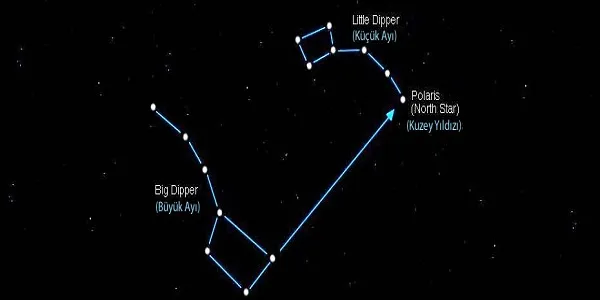
The Polar Star is a whitish yellow, bright star located at a position of less than 1 ° from the north pole in the full vertical direction of the Earth's north pole. Pole Star is a very important point of bearing in the course of land, sea and air, as it steadily shows the north when viewed from any point in the northern hemisphere. The big bear is easily found by following the direction of the top two stars of the star cluster. The little bear can easily be detected because it is located at the end of the stars in the star cluster. The Polar Star is a bright star about 650 light-years from our Earth and 3000 times brighter than the Sun.
The pole star slides slightly in the direction of the north pole by gradually changing the direction of rotation of the earth's axis of rotation. According to this move, after 2000 years, the Gama Star of Star in the Big Bear team star and the Vega Star in 13,000 years later will be the Polar Star.
Polar Star is the brightest star of the Miniature constellation.
The Polar Star is in almost the same direction as the earth's axis, unlike other celestial bodies, does not change during the day and always shows the north. Because of this feature, it has been used for navigation and navigation throughout history. Polar Star, such as the North Star is also the same reason to take names.

The Polar Star is not exactly in line with the world's axis, but the difference is only about three quarters of a degree, 44 minutes. Since the earth's axis has changed direction over time, this difference will be further reduced over the next two centuries and will be reduced to 25 minutes. After that, the Polar Star will gradually move away from the axis of the earth and will return to the same place after 25,000 years.
The Polar Star is actually a three-star system. The brightest star of the system is A; large yellow, luminous variant is a variant of cephemite. The star of B, a yellow dwarf that revolves around it, was discovered by William Herschel in 1780. The existence of the third dwarf star was discovered in 1929.
Finding the Polar Star in the sky is pretty easy. The Polar Star will always be in the northern direction of a compass. By following the fictitious straight line joining the two bright stars at the end of the body of the "pan" formed by the constellation of the Great, the Polar Star can be found approximately five times the distance between these two stars. The height of the Polar Star's horizon will reflect the latitude you are in. For example, in Istanbul, the Polar Star appears at an elevation of 41 ° from the horizon.
The Polar Star appears only from the northern hemisphere, not from the southern hemisphere. On the other hand, there is no bright South Polar Star showing South. However, the southern pilgrim constellation roughly shows southward direction to those in the southern hemisphere.